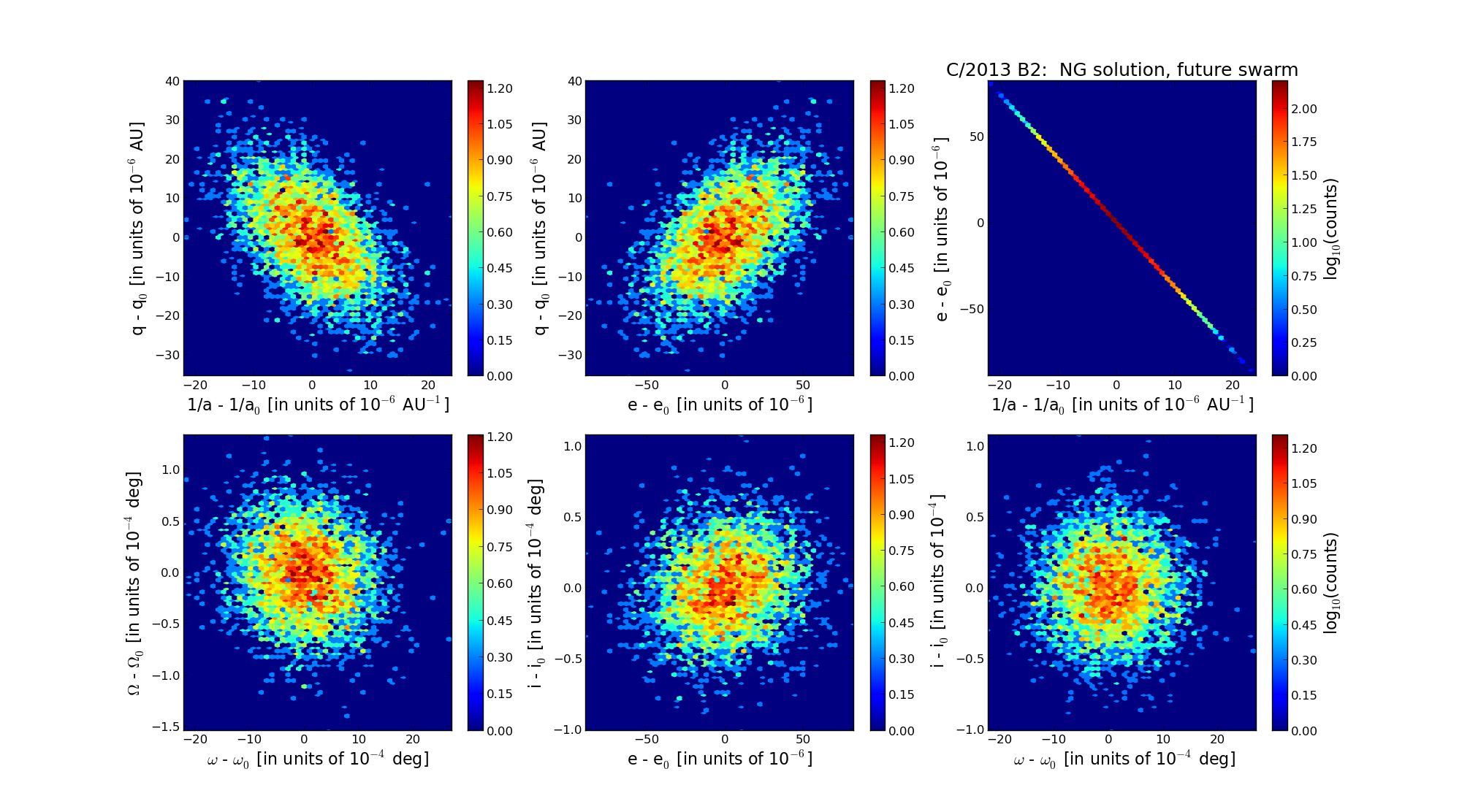C/2013 B2 Catalina
more info
Comet C/2013 B2 was discovered on 16 January 2013 during Catalina Sky Survey, that is 5.5 months before perihelion passage, and next observed 1.2 yr in a range of heliocentric distances: 4.01 au – 3.734 au (perihelion) – 4.43 au.
C/2013 B2 had its closest approach to the Earth on 23 January 2013 (3.251 au, one week after discovery, see figure).
This Oort spike comet suffers small planetary perturbations during its passage through the planetary system that lead to a more tight future orbit.
See also Królikowska and Dybczyński 2017.
C/2013 B2 had its closest approach to the Earth on 23 January 2013 (3.251 au, one week after discovery, see figure).
This Oort spike comet suffers small planetary perturbations during its passage through the planetary system that lead to a more tight future orbit.
See also Królikowska and Dybczyński 2017.
| solution description | ||
|---|---|---|
| number of observations | 132 | |
| data interval | 2013 01 16 – 2014 03 30 | |
| data type | perihelion within the observation arc (FULL) | |
| data arc selection | entire data set (STD) | |
| range of heliocentric distances | 4.01 au – 3.73 au (perihelion) – 4.43 au | |
| type of model of motion | NS - non-gravitational orbits for standard g(r) | |
| data weighting | YES | |
| number of residuals | 260 | |
| RMS [arcseconds] | 0.29 | |
| orbit quality class | 1a | |
| orbital elements (barycentric ecliptic J2000) | ||
|---|---|---|
| Epoch | 2319 01 25 | |
| perihelion date | 2013 07 01.50743532 | ± 0.00339387 |
| perihelion distance [au] | 3.72667569 | ± 0.00001034 |
| eccentricity | 0.99914562 | ± 0.00002434 |
| argument of perihelion [°] | 156.311274 | ± 0.000660 |
| ascending node [°] | 331.953004 | ± 0.000037 |
| inclination [°] | 43.487815 | ± 0.000027 |
| reciprocal semi-major axis [10-6 au-1] | 229.26 | ± 6.53 |
| file containing 5001 VCs swarm |
|---|
| 2013b2n5.bpl |

